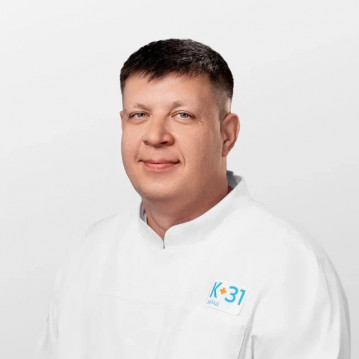The kidneys are a vital organ for a person, which is responsible for the mineral, water and salt balance in the body. In case of violation of its work, various pathologies develop. One of the most common is urolithiasis. According to statistics, up to 3% of the world's population suffer from urolithiasis. This is a pathological process in which stones (calculi) form in the organs of the genitourinary system.
Clinic "K+31" offers its patients modern protocols and methods of treatment of urolithiasis. Thanks to them, you can quickly solve the problem of stone formation and improve your general condition.
Diagnosis of urolithiasis
The formation of stones in urine can be caused by various factors: insufficient hydration of the body, metabolic disorders, an excess of certain trace elements, etc. However, regardless of the cause, urolithiasis is a disease that can lead to serious complications and even death.
Before prescribing a suitable therapy, the urologist must prescribe a comprehensive examination. It may include:
- radiography of the urinary tract;
- computed tomography of the urinary system;
- intravenous urography;
- Ultrasound of the kidneys.
The complex of methods is selected individually and depends on the patient's condition and his medical history. Based on the results of the examination, the urologist chooses one of the options: conservative treatment, remote lithotripsy, contact ureterolithotripsy, percutaneous nephrolithotripsy, laparoscopic or abdominal surgery.
Conservative treatment of urolithiasis
In the early stages of the development of pathology, you can do without surgical intervention. This is possible if the formations do not exceed 4 mm in diameter and are close to the bladder. In this case, the stone is excreted through the ureters in a natural way.
To speed up the process, the urologist prescribes medications to the patient, an increased drinking regimen (more than 2 liters of water per day). This helps solve the problem of how to remove kidney stones without surgery in the early stages. To control the excretion of stones during conservative treatment, the patient is shown to urinate into a special container.
The method has a number of contraindications:
- renal failure;
- severe pain that is not relieved by drugs;
- urinary tract infection;
- The patient has only one kidney.
In the presence of one or more contraindications, an operative method of therapy is used. Also, surgical methods of treatment are resorted to if conservative therapy has not led to the expected result within four weeks.
External lithotripsy
DLT or crushing stones with sound is considered one of the most minimally invasive methods. Often the procedure is performed on an outpatient basis and the patient can return to normal life within a day after the operation.
With the help of a lithotripter, shock waves act on the stone. It breaks up into fragments, the resulting sand and crystals are excreted naturally during urination.
The whole process takes place under local anesthesia and under X-ray control for precise impact on the stones. The operation lasts an average of 60 minutes, and the release of residual fragments takes up to three months. The procedure is effective if it is necessary to remove a stone from the ureter or bladder (cystolithotripsy).
Contraindications:
- narrowing of the ureter below the localization of the stone;
- an acute infectious process occurring in the genitourinary system;
- impaired excretory function of the kidneys;
- high density or large formation size;
- acute pyelonephritis.
In rare cases, the use of the method can cause complications: swelling of the kidney, blockage of the ureter and hemorrhages at the site of fragmentation of the calculus.
Contact ureterolithotripsy
CLT is performed by the endoscopic method. First, the stones are crushed in any available way: compressed air, sound waves, the use of a laser, etc. After that, a special instrument, a ureteroscope, is inserted into the patient's urethra. It allows you to remove fragments of the calculus without excising the tissues.
After the procedure, the ureter is stented. For this, a ureteral stent is installed for the patient - a thin tube that is placed directly in the organ to facilitate the excretion of urine along with sand and fragments.
The operation is performed under general or special anesthesia. It has a number of advantages:
- high efficiency;
- low traumatism;
- the ability to withdraw several stones in one session.
A contraindication to the procedure will be the presence of an acute inflammatory process in the organs of the genitourinary system.
In some cases, complications may develop: local bleeding, infections, damage to the ureters.













